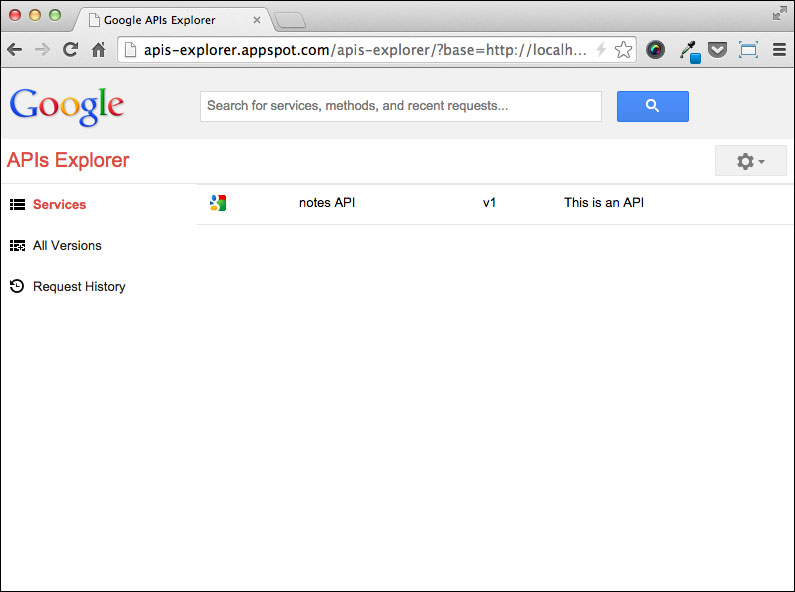Testing the API with API Explorer
We can test our REST API on the local development environment by running the dev_appserver.py script or deploying the application on App Engine. In both cases, Cloud Endpoints provides a tool that let us explore our API; let's see how.
With the local development server running, we point the browser to the http://localhost:8080/_ah/api/explorer URL, and we are immediately redirected to the API Explorer, where we can see our API listed, as shown in the following screenshot:

When we click on our API name, the explorer lists all the endpoints exposed through the Cloud Endpoints service. Before we begin our test, we should ensure that some notes exist in the Datastore. We can use the Notes web application to insert them.
By clicking on the notes List entry, we can access the details page for the endpoint, where we can click on the Execute button to perform a GET request and retrieve a collection of notes visible in the Response section, represented in JSON format...
























































